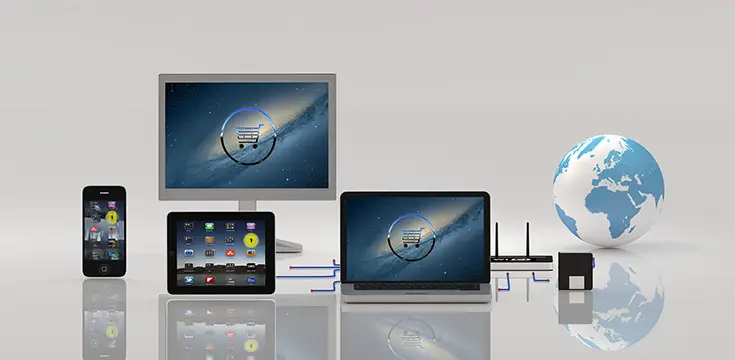Table of Contents
Responsive images are imperative nowadays. Any website should work on multiple devices, as we become more and more dependent on our smartphones for browsing and shopping. While eCommerce is growing exponentially, much of this growth corresponds to mobile commerce (mCommerce).
This is not surprising considering users check their phones an average of 150 times a day. Therefore, if your website or e-store is not optimized for mobile, you need to do it now. This article explains what is a responsive design for mobiles and tips to help you manage responsive images.
What Is Responsive Design?
Adapting and resizing images for the browser is a standard technique. However, when we need the website to work for multiple devices, simply resizing the images is not enough.
Thus, responsive imagery is the process for delivering multiple image sources to the browser, according to the resolution, the size of the image element and the display density of the device. For example, a typical website contains a header image and may have some other content images below. The header image generally uses the whole width of the header, in landscape layout. This image can work well in a large site, but for mobile devices, the screen is too narrow, and in portrait layout, so the rendering is not going to work. Therefore, you need to have a mobile-responsive web design.
Mobile-Responsive Web Design
This is an approach widely implemented in the web designing process to enable the web pages to render optimally across various mobile devices, with different window or screen sizes, such as desktops, smartphones, tablets, and laptops. Front-end developers are focusing on developing mobile-friendly websites to attend to the increasing demand of users interacting with the web through their mobiles
Why Is It Important to Have Mobile Responsiveness
Website traffic has grown significantly thanks to the widespread use of smartphones. This change is reflected in the following stats that show light about the growth of mCommerce:
- Almost 80% of US residents prefer to shop through their smartphones.
- More than half of consumers bought something online after seeing it on social media.
- On the other hand, 62% of consumers will not return as customers if they have a negative experience with the mobile store. using the mobile buying experience to decide if returning to the store.
- 90% of consumers use their devices to complete everyday tasks, including routinary purchases.
- mCommerce sales on Black Friday and Cyber Monday 2018 broke the records of 2017, with more than $2 billion sales.
Tips to Achieve Responsiveness
You can ensure your images are responsive to any device by using a software solution that allows you to adapt image properties to the target device. There are a number of enterprise-level solutions available, such as this one from Cloudinary, that can help you to manage the image responsiveness in a jiffy.
Google recommends developers to avoid the following mistakes when working in responsive design:
- Using media content not-compatible with mobile devices
- Having interstitials covering the original content
- Using weirdly shaped or tiny fonts
Furthermore, a mobile user’s original request should be redirected to the appropriate mobile site’s URL.
Image optimization
Responsive image technologies and solutions allow you to offer the browser a number of image files. There are two main methods for working with responsive images, basically showing the same noticeable quality. The first works by reducing the number of pixels (resolution switching), while the second involves offering different images for different display formats (art direction). How do you send the right image to the right device? This is the work of image breakpoints.
Working with Image Breakpoints
An image breakpoint refers to the viewport sizes at which we make changes to the layout or functionality of a page or an image. In simple terms, it is the point at which an image switches to another version in size or resolution to adapt to the target device. When working with breakpoints you should think about two aspects: First, how many image sources are needed to cover the range of sizes for this image usage. Second, the usage of image sources.
Tips to pick image breakpoints include:
- Match your layout breakpoints—that means, for example looking at the displays for mobile, tablet and desktop and look at the number of layout breakpoints, then matching them for the images.
- Test representative images—you can look at some representative images and calculate how many breakpoints they need.
- Pick the image breakpoints according to a performance budget—that means, limiting the number of wasted bytes the browser can download besides what needs to fit the image. For example, you can configure the breakpoints so the sources are never more than 20K apart.
Wrap Up
With mobile traffic composing 60% of internet traffic, creating a website working on mobile devices is critical for any organization. Mobile responsive images are necessary to ensure your website is available no matter what device the customer chooses to use to visit. Thus, web developers should implement responsive design best practices, using appropriate tools to ensure a website is responsive from the start.
Having a website with responsive layout and images results in returning visitors, and thus a stronger brand and higher rankings. An image optimization solution can help to ease much of the workload required to create and manage responsive images. In this article, we’ve offered a few tips to get you started.
(3D graphics image by Quince Creative)

